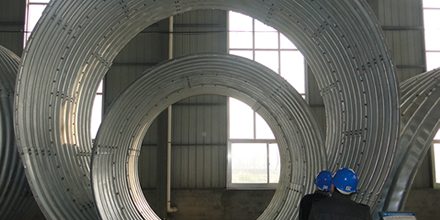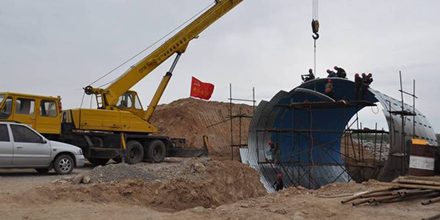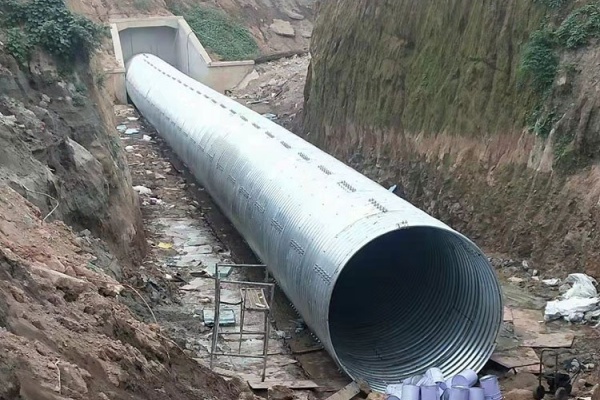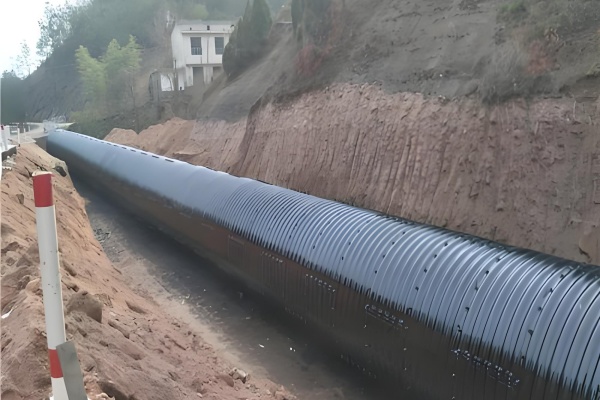Structural Features and Technical Advantages of Corrugated Pipe Culverts
This article dives deep into the application of corrugated pipe culverts in railway and highway tunnels. By analyzing their structural features, technical advantages, and real-world case studies, we highlight their importance in modern transportation infrastructure. Research shows that corrugated pipe culverts offer excellent mechanical performance, durability, and cost-effectiveness, effectively solving many challenges in traditional tunnel construction. The article also explores key design and construction techniques and looks at future trends, providing a solid foundation for their broader use in transportation projects.
As China’s transportation infrastructure rapidly develops, railway and highway tunnel projects face increasingly complex environments and higher technical demands. Corrugated pipe culverts, with their unique structural features and superior performance, have become a go-to solution in tunnel engineering. This article aims to analyze their application in railway and highway tunnels, discuss their technical advantages, design and construction tips, and future trends, offering practical insights for engineers and project managers.
Corrugated pipe culverts have been around since the early 20th century, and over the past century, their materials, structures, and construction techniques have evolved significantly. In railway and highway tunnel projects, they not only address challenges faced by traditional methods but also improve project quality, shorten construction timelines, and reduce costs. That’s why studying their application in tunnel engineering is both theoretically and practically valuable.
Corrugated pipe culverts are tubular structures made from corrugated metal sheets or composite materials. Their unique wavy design gives them excellent mechanical performance and flexibility. They come in various shapes—round, oval, arched—making them adaptable to different project needs. Materials like galvanized steel, aluminum, and advanced composites are commonly used, offering great corrosion resistance and durability, even in tough geological conditions.
Compared to traditional tunnel structures, corrugated pipe culverts have clear advantages. First, they’re lightweight yet strong, capable of handling soil pressure and vehicle loads while offering excellent seismic performance. For example, in one project, a corrugated pipe culvert remained stable during an 8-magnitude earthquake. Second, their flexible structure adapts to uneven ground settlement, reducing the risk of cracks. Plus, their prefabricated, on-site assembly approach cuts construction time and minimizes environmental impact. Economically, they’re cost-effective, with overall project costs 20%-30% lower than traditional tunnels
In railway tunnel projects, corrugated pipe culverts are widely used in mountain tunnels, urban subway tunnels, and the reinforcement of existing lines. In mountain tunnels, they tackle challenges like soft surrounding rock and high ground stress. Their flexibility allows them to adapt to rock deformation, reducing support pressure and improving tunnel stability. In urban subway tunnels, their quick installation minimizes disruption to traffic and daily life, while their vibration-dampening properties reduce the impact on nearby buildings.
There are many success stories. For instance, in a mountain railway tunnel project, corrugated pipe culverts were used to cross a fault zone, cutting construction time by 30% and significantly lowering risks. In another urban subway project, they solved the challenge of tunneling under existing buildings, reducing vibration impact by 50%. These cases prove their practicality and superiority in railway tunnel engineering.
End sealing. After all pipe sections are installed, the gap between the corrugated pipe culvert and the old culvert is sealed. Use cement mortar brickwork to seal the ends, lay 3 layers of bricks (thickness not less than 36cm), and use concrete mortar to seal the surface (mortar thickness not less than 3cm).The larger side is reserved for pumping and exhaust holes. After the end is sealed, let it stand for 48 hours and then grouting can be carried out after it reaches a certain strength.
In highway tunnels, corrugated pipe culverts are equally promising. They’re commonly used in mountain tunnels, urban underpasses, and tunnels in challenging geological conditions. In mountain areas, they handle complex terrain and risks like landslides and mudflows, while their quick installation speeds up construction and reduces risks. In urban underpasses, they minimize disruption to underground utilities and existing structures, while their load-bearing capacity supports heavy vehicle traffic.
Success stories abound here too. For example, in a mountain highway tunnel project, corrugated pipe culverts were used to cross a weak rock section, boosting construction efficiency by 40% and cutting costs by 25%. In another urban underpass project, they solved the challenge of tunneling under a busy road, reducing traffic disruption time by 50%. These examples highlight their technical advantages and value in highway tunnel engineering.
The successful application of corrugated pipe culverts in tunnel projects relies on smart design and precise construction. In design, factors like structure type, material choice, and cross-sectional dimensions must be carefully considered to meet load, deformation, and durability requirements. Load calculations should account for soil pressure, water pressure, and vehicle loads, using methods like finite element analysis for accuracy. Structural design should focus on the interaction between the culvert and surrounding soil to optimize stability. Corrosion protection, through coatings or cathodic protection, is also crucial for long-term durability.
In construction, installation and quality control are key. Detailed geological surveys and site preparation ensure the foundation can handle the load. During installation, precision in joining and sealing is critical, using specialized connectors and sealants. Backfilling should be done in layers to ensure even compaction. Monitoring and testing during construction help catch and address issues early, ensuring project quality.
Corrugated pipe culverts have proven their worth in railway and highway tunnel projects. Their unique structure and performance solve many challenges in traditional tunnel construction, improving quality, shortening timelines, and lowering costs. Through detailed case studies, we’ve seen their adaptability in complex geological conditions, their efficiency in urban environments, and their potential in specialized projects.
Looking ahead, advancements in materials and construction technology will expand their use further. New composites will enhance durability and load capacity, while smart construction techniques will improve efficiency and quality control. Standardized, modular designs will make them even more accessible. Plus, their eco-friendly and energy-saving benefits will make them a key player in sustainable infrastructure development.
In short, corrugated pipe culverts are an innovative solution with huge potential in railway and highway tunnel engineering. As technology matures and more projects succeed, they’ll play an even bigger role in building China’s transportation infrastructure, driving sustainable development in the industry.
 Products
Products Application
Application



